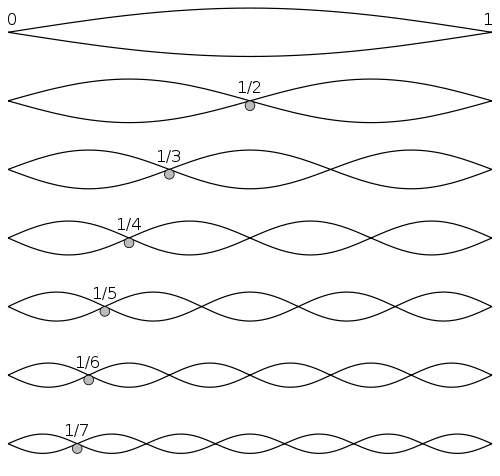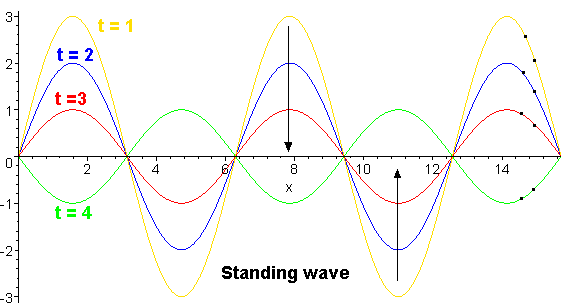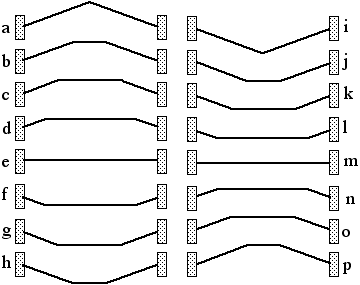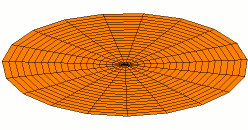- The wavelengths of the normal modes are
λn = 2 L, L, 2 L/3, 2L/4 ... 2L/n,
n=1,2,3 ...
- The general relation between frequency and wavelength
λ f = v remains valid
- Hence, there are normal frequencies as well
fn = v/λn = n v /(2L) =
= v/(2L), V/L, 3 v /(2L)...
- n is the number of antinodes
- n-1 is the number of nodes besides the end points
|

|





